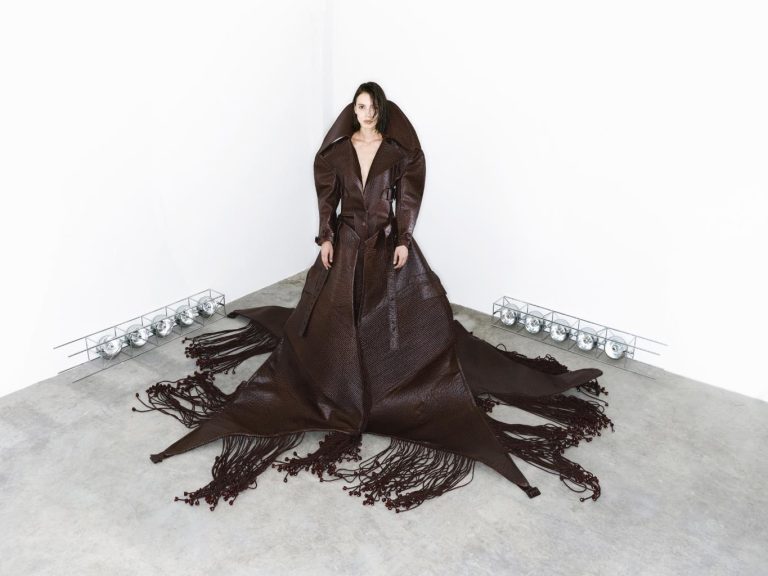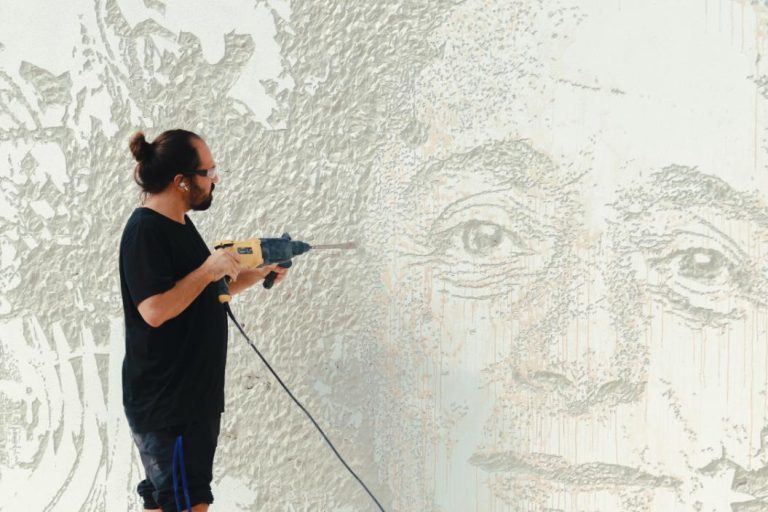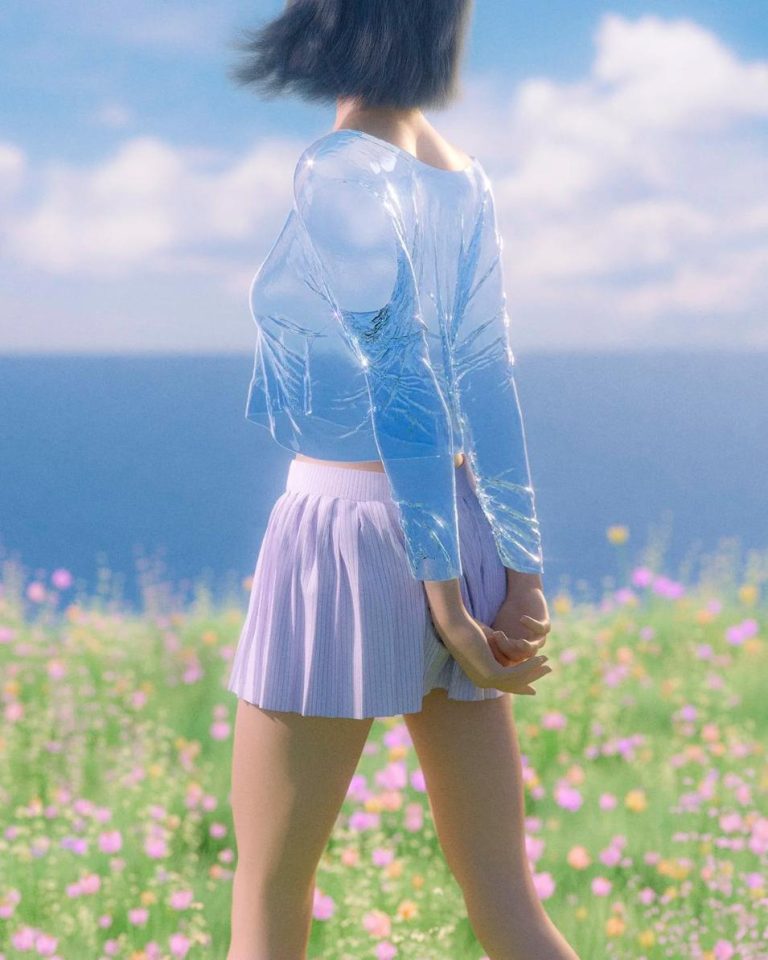Kou Yamamoto's work, deeply rooted in his Japanese heritage, seamlessly blends traditional cultural elements with avant-garde technological expressions, creating a unique artistic identity. Drawing from the philosophies of movements like Musique Concrète and Mono-ha, Yamamoto's creations invite audiences to experience the world through a lens that is both introspective and expansive. In this interview, we delve into Yamamoto's relationship with art and music, exploring the profound personal and cultural influences that shape his innovative approach to creativity.
Kou Yamamoto: Merging Tradition and Technology in Avant-Garde Art
Kou Yamamoto‘s work, deeply rooted in his Japanese heritage, seamlessly blends traditional cultural elements with avant-garde technological expressions, creating a unique artistic identity. Drawing from the philosophies of movements like Musique Concrète and Mono-ha, Yamamoto’s creations invite audiences to experience the world through a lens that is both introspective and expansive. In this interview, we delve into Yamamoto’s relationship with art and music, exploring the profound personal and cultural influences that shape his innovative approach to creativity.
Your work comes from a place that feels very personal, and the philosophy your work embodies could be categorized as avant-garde because of its technological post-modern overtones. Please tell us about your relationship to art and music as well about your reasons for creating.
My creation is deeply rooted in my Japanese identity, influenced by the nature and shrines of Kyoto. As I progress in creating my works, I have encountered and resonated with the processes of expression found in Musique concrète and the Japanese Mono-ha(もの派) movement of the 1970s. These influences might be interpreted as “technological post-modern” or “avant-garde.” However, these were not intentionally chosen but rather naturally drawn to me.
At the core of my creation is an exploration that begins with the pure curiosity of a child playing in a sandbox, which I feel is a pure interaction with the universe. This pure interaction with the universe brings forth new forms of expression and ways of thinking, leading to the creation of new expressions (universes) in this world. I hope that viewers who experience this new universe gain new perspectives, broaden their horizons, and see this world in a richer way.
In interviews you’ve mentioned a fondness for two artistic movements that are relatively obscure in Western popular culture though are significant, such being Mono-ha and Musique Concrète. Could you please elaborate on what drew you to these genres and perhaps provide instances illustrating their profundity in your view?
Encountering the expressive processes of Musique Concrète and Japan’s Mono-ha from the 1970s was something I naturally and strongly found myself drawn to as I progressed in my creative activities. While these movements may be relatively unknown in Western popular culture, they have had a significant impact on me. Musique Concrète attracted me with its method of extracting, processing, and combining existing sounds to create entirely new music.
It is appealing because it finds new value in the ordinary sounds heard in daily life and provides listeners with a new auditory experience through it. On the other hand, Mono-ha’s approach to reevaluating the relationship between everyday materials and space deeply resonated with the fusion of body and technology in my works. Mono-ha artists explore the existence of materials themselves and how they interact with their surroundings, creating works that make viewers re-recognize the essence of things.
You use touch designer which is a node (operator) based software that allows creatives to interface digitally with the world through data, signal: sound or otherwise, to produce multimedia visuals both memorable and complex. How did you first begin using this software, was it through your audiovisual needs or for visual artistic desires?
My initial foray into using TouchDesigner was driven by my visual artistic desires, though it wasn’t a consciously chosen path. In fact, I serendipitously discovered this direction while exploring various possibilities. My early aspiration to enhance the depth of physical expression in dance naturally led me to the world of audiovisuals. Over time, I came to realize that TouchDesigner acts as a seamless bridge, integrating movement, sound, and visual imagery.
You respect spending time alone and speak about the significance of emotion. Your work in all of its forms contains a high emotionality whether manifested through expressive bodily gesture or deep sonic experiences. What is it about this emotional depth that attracts you?
All the scenes in everyday life are indescribable, but they are incredibly important inspirations. Time spent alone is a source of deep introspection and creativity for me. In this silence, I can confront my emotions and delve deeply into them. The movements of the body and the sounds generated in my work arise from this exploration of emotions during my time alone. The reason I am attracted to emotional depth is that it allows me to touch the rawest parts of the human experience.
Emotions are a universal language that we all share, and through my work, I can connect with the audience on a profound level. In my creations, I strive to offer the audience an opportunity to engage with their inner selves. Just as I have experienced in my own solitary moments, I hope that through deep emotions, people can deepen their self-understanding and reflect on themselves, others, and the universe.
I love that your work feels mysterious. Your pieces have been shown in many important galleries across the world. How do you feel about the varying responses your art elicits from people, and how does this influence your creative process or point of view?
I am deeply grateful and appreciative that my works are exhibited in galleries around the world and receive various reactions from many people. Sharing the emotions and worlds that each person feels is a great joy for me. Every reaction to the mystical resonance and emotional depth conveyed through my works is a new discovery for me. If my work can move something in people’s hearts, there is no greater happiness for me. I deeply value the connections between people and the interactions of hearts. I wish to gently and softly express the sensations that arise from within me and the inspirations born from the harmony with the surrounding nature and technology.
Generative art, AI, and machine learning are progressively reshaping the New Media landscape. Notably, Japan’s historical relation to robotics and futuristic ideas has fostered a natural convergence of traditional art forms and cutting-edge technology among many of its contemporary artists. This fusion has given birth to novel artistic styles that reflect the country’s unique cultural identity. What in your view is this unique relationship japan has with technological progress?
First, regarding Japan, there is a quote by the Japanese writer Yukio Mishima: “Japan’s transformative power lies in the crucible of ‘nothingness’.” He asserts that “the Japanese have nothing original, but within that nothingness, they absorb various things from outside, transform them into something completely different, and then release them.” Street dance was not created by the Japanese, but we have deeply pursued how to internalize that expression as our own ”transformative power(変性力)”.
Similarly, Yukio Mishima argued that post-war Japan’s rapid Westernization and modernization led to the loss of Japanese virtues and ethics. This perspective has also prompted me to think deeply about how to align my Japanese identity with street dance and bodily expression. This naturally extended to expressions using technology.
I would be delighted to establish a good cooperative relationship with ‘machines-san,’ a term where I add ‘san’ to machines to affectionately personify them, reflecting a Japanese cultural practice. It would be an honor if my actions could serve as a bridge for this collaboration. I express myself by choosing tools naturally, and while I don’t know exactly what will come of it, it might be one of the fluctuations of the universe or the Earth’s will.
One thing I can say for certain is that everything I am now is because of myself, others, the world, and the universe, so I am simply grateful. If I were to choose one word to say at the end of my life, it would be “thank you.” And while I wish for peace, ideally everyone would understand each other. Lately, I’ve been thinking that this might be achieved through a perfect sense of distance and balance. Perhaps I am constantly seeking a perfect balance by mixing various tools.
Artists across disciplines possess divergent views about the demands and nature of social media. While some find pleasure in platforms ability to universally showcase their work, other artists maintain a complex relationship with its tendency to reduce artistic merit to numerical values. Would you kindly share your opinions on the impact of social media?
First, I believe there are art forms that exist as visual works on screens and those that thrive through physical experience. I hope both have promising futures, but in reality, screen-based art has become more dominant. As of now, we have our bodies, and everything originates from this physical existence. Thus, I believe that experiencing the universe, nature, others, and ourselves through our bodies is paramount. When I was in high school, encountering a b-boy by chance in a club transformed my life.
Similarly, I think social media can act as a catalyst for such profound changes. Of course, there seems to be some inherent contradiction in the pursuit of “likes” and followers. It is natural that this leads to many discussions. However, I believe that many people are subconsciously aware of this contradiction and respond to and learn from it as a part of the flow of the times. If we can positively understand and observe both the good and bad aspects together, I would be very happy.
Do you have any desires to explore budding technologies or emerging methodologies that aren’t yet mainstream? If so, if you could project into the future, how do you anticipate pushing the boundaries of immersion and the transcendent potential of your artistry?
Reflecting on the Japan where I was born and which I love. The fusion of Japan’s traditional culture and emerging technologies. I wish to harmonize Japan’s traditional methodologies, the sense of fusion between nature and the body that I have experienced, and the cosmic flow of the era in which I was born (for me, the b-boy style) with the sense of Japanese tranquility and ambient aesthetics. This process is a journey for each individual to find their unique balance and explore new worlds through it. Embracing technological advancements is more than just using new tools; it offers opportunities to perceive and share experiences that transcend our usual senses.
Therefore, with a heart full of gratitude, I find significance in feeling nature and the body, sensing the heart, and surrendering to the flow of the cosmos, thereby pioneering new perspectives. Through this journey, I aim to explore new forms of expression born from the fusion of art, technology, and culture, presenting and sharing unknown beauty with the world. By doing so, we can collectively broaden our horizons, expand the universe within us, and look toward the future with richer hearts. It would be a joy for all of us to gaze upon this world and the future beyond it, enriched by these experiences.
Written by: Kou Yamamoto
Editorial Consultant/Translator: Kohei Nakatsu
Interested in publishing your work?
If you are interested in having your work featured on Visual Atelier 8, please visit our Submission page. Once approved, your work will be presented to our global audience of professionals and enthusiasts.






